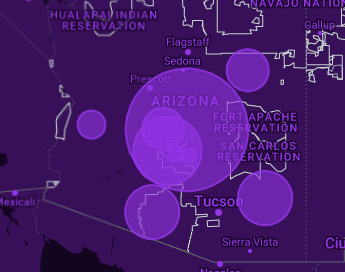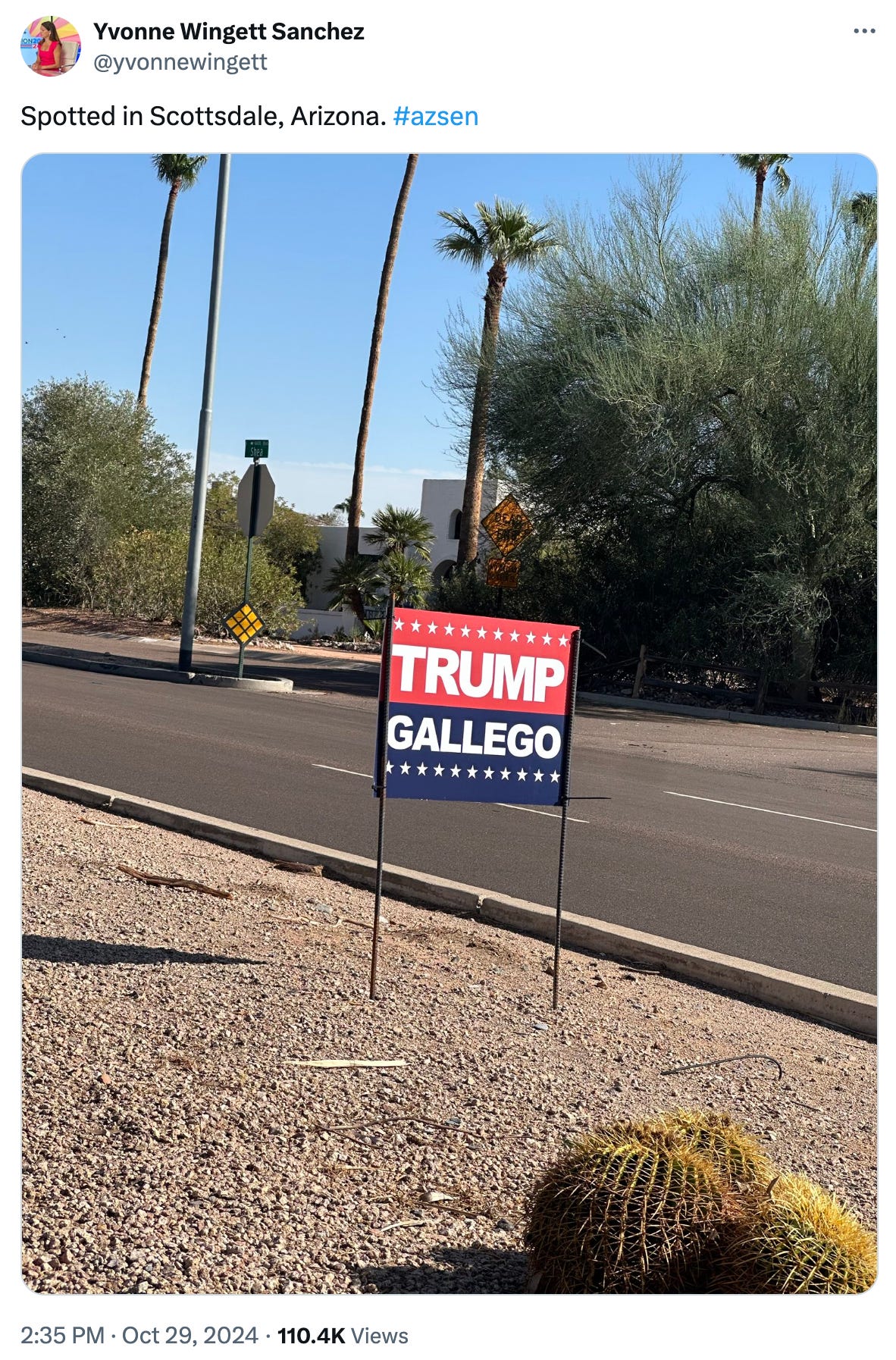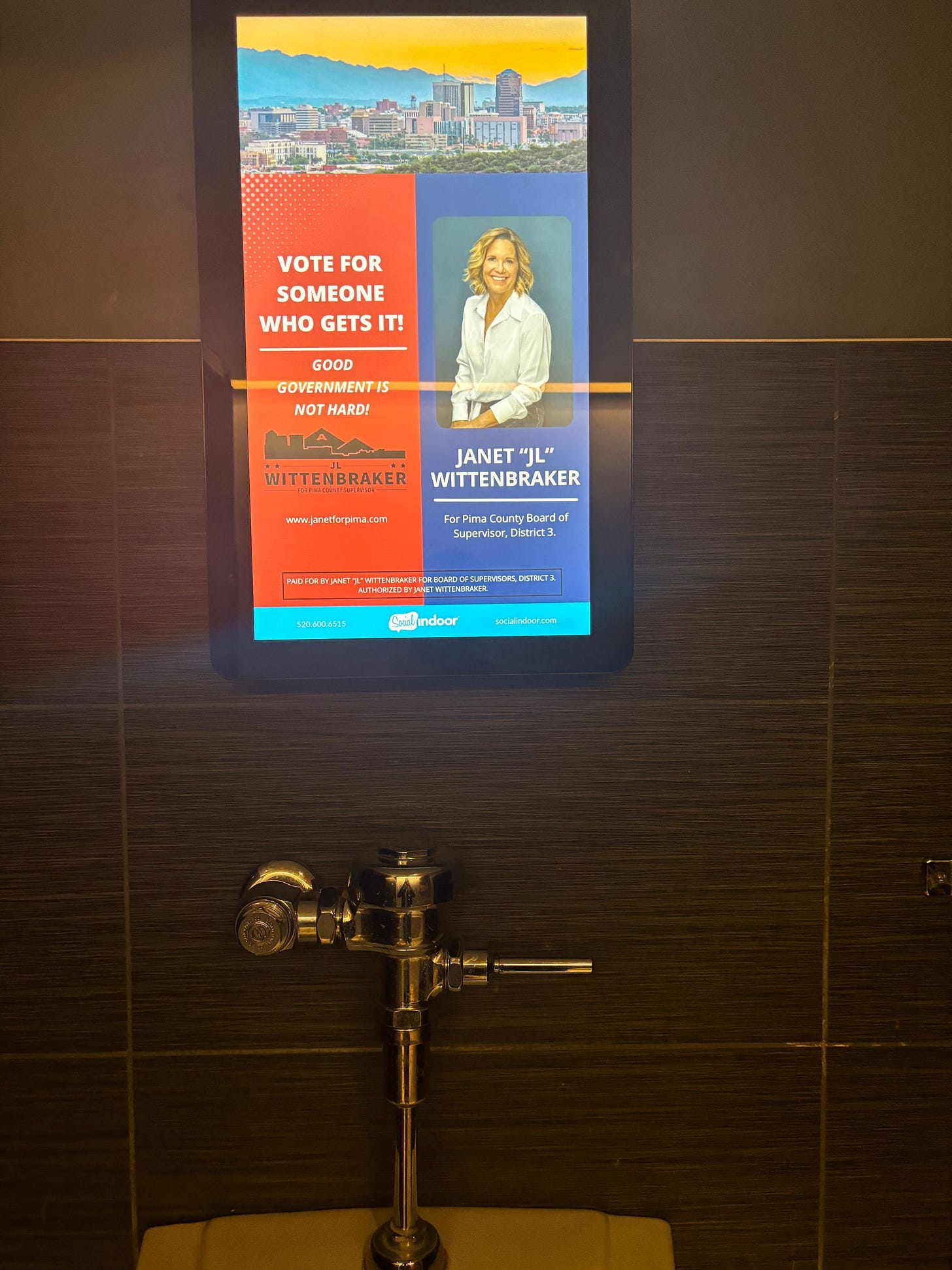Votebait in your algorithm
They’re everywhere … New governor incoming … And the return of peeing with politicians.
We live on journalists’ salaries, so we rely on streaming services and YouTube instead of pricey cable plans. But that doesn’t mean we’ve escaped the cacophony of political ads in the digital world.
These days, a lot of that ad spending happens through Google, whether you’re searching where to vote or watching a podcast on YouTube. Google and YouTube are two of the most visited websites in the world and are owned by the same parent company, so campaigns can see a big return on investment by advertising there.
The shift to digital advertising is seismic, and it’s essential to garner votes among those who spend a lot of time online.
TV advertising is still huge. But campaigns have to fight to pick up those limited spots, while online advertising is nearly limitless.
The future of advertising is online.
With that in mind, we wondered: What kind of content are other chronically online Arizonans seeing? So we spent the day on Google’s handy advertising database to see who’s spending money here.
The numbers show political groups have spent $39.6 million on roughly 55,000 election ads in Arizona so far this year.
Much of that money was spent in the Phoenix-based Congressional District 1 and spread across Maricopa County, but Southern Arizona also saw big pockets of spending.
When political groups go to Google for advertising, there are three main places those ads show up: when you’re watching a video on YouTube, when you make a Google search and on other websites that work with Google’s advertising platform. Advertisers can target their content based on location, age, gender and “contextual targeting” — which means an ad is more likely to show up with a specific keyword or type of content.
We googled “Where to vote in Maricopa County,” for example, and the first result is a link to Donald Trump’s campaign website.
Democrats have already won the cable television ad war. Democratic groups spent $213 million more than Republican ones on TV broadcast advertising between August and late October, per the New York Times.
That trend carries over to Google, where the top four spenders on Arizona-based political advertising came from Democratic-backed PACs and campaigns.
The biggest spenders
So far this year, the Future Forward PAC has spent the most money on Google ads in Arizona at $4.95 million. It’s a Democrat-aligned group that predominantly produces videos appealing to the middle class and showing Kamala Harris shaking hands with construction workers. One of our favorites from Future Forward is a TikTok-style video of a woman dancing while pointing at talking points on the screen as a baby flails around in her arm.
Harris for President ranked second in Arizona-centric Google ad spending this year at $3.79 million, followed by Democratic U.S. Senate candidate Ruben Gallego’s PAC at $2.22 million and the Democratic Senatorial Campaign Committee at $2 million. Kari Lake’s PAC came in 13th place for spending.
The Gallego for Arizona PAC has spent a lot ensuring its content comes to the top of your Google searches. More than 2 million people saw his ad of a small business owner calling Lake “all noise, no results,” which cost the PAC more than $70,000 for an eight-day run. A lot of the ads feature Sen. Mark Kelly advocating for Gallego’s election while highlighting the Senate hopeful's military history.
Republican advertisers were the fifth and sixth highest Google spenders, with Make America Great Again Inc. and Donald J. Trump for President 2024, Inc. spending $1.91 million and $1.76 million, respectively.
The MAGA group targeted people ages 35 to 54 with a 15-second clip of the price display spiking at a gas pump. It has a lot of ads trashing Harris’ record as a district attorney, which it claims includes “shielding” undocumented immigrants from deportation.
The Trump for President group has some fun ads, including one that shows clips of Trump calling for “no tax on tips” set to funky music and an ending that feels like winning on a slot machine.
There are also not-so-fun ads, like this video alleging Harris wants taxpayer-funded sex changes. The group paid more than $30,000 for a two-week run of that one.
State legislators
State legislators have also gotten into the Google game. The Arizona Democratic Party has spent $436,000 pushing ads for Democrats in the most competitive legislative districts, like Sen. Eva Burch, Sen. Christine Marsh, Matias Rosales and Brandy Reese. Those ads generally hit hard on abortion access, and most of them were targeted toward Maricopa County residents.
Former Rep. Kelli Butler, a House candidate in LD4, has spent $118,500 propping up her platform through a mix of family-first ads and trashing her competitor, Republican Rep. Matt Gress. Butler’s campaign excluded 18-through-24-year-olds from seeing the YouTube ads, but all ages are directed to a sponsored link to her campaign website on certain Google searches. Senate hopeful John McLean spent $88,700 on Google ads, many targeting his opponent Vince Leach. He also excluded the 18-24 age range for his videos.
And while we found much less Republican spending to interrupt your YouTube viewing, state Senate candidates Leach and J.D. Mesnard were the exceptions.
Leach has spent $39,200 for 22 ads, though most were bashing Sen. Justine Wadsack in his successful primary race. More recently, his ads call for ending “the political nonsense” and deploying “a strikeforce to secure the border.”
Mesnard spent $37,000 on 17 ads this year that credit him for writing laws giving teachers a 20% raise, protecting seniors from financial exploitation and creating “the largest tax cuts in Arizona history.” Most of his ads targeted those 55 and older who live in his Chandler and Gilbert-based district.
Shape Arizona's future! Vote in the State General Election and make your voice a part of our democracy!
Never surrender: The Arizona Supreme Court plans to spend the day after the 2024 election taking up appeals from three 2022 election losers and deniers, per Capitol scribe Howie Fischer. Self-professed Gov. Kari Lake, Attorney General Abe Hamadeh and Secretary of State Mark Finchem are all seeking new elected offices this election cycle while still appealing 2022. Meanwhile, actual Secretary of State Adrian Fontes argued in court that he shouldn’t have to release the names of the more than 200,000 Arizona voters who were caught in the glitch that means their citizenship status was never actually verified because he doesn’t want “blood on (his) hands” if election integrity activists harass or harm them, the Arizona Mirror’s Jerod MacDonald-Evoy reports.
Provisional problems: The Arizona Supreme Court’s refusal to require Pinal County to adopt a “vote-center” model allowing voters to cast their ballots anywhere in the county, rather than a neighborhood polling place model where they must go to a specific voting location, will almost certainly lead to more ballots being rejected, Votebeat’s Jen Fifield explains. Voters who go to a wrong polling place will either have to find the right polling place or cast a provisional ballot, which will be rejected.
Trust him with your elections: Republican Navajo County Recorder candidate Timothy Jordan was arrested for road-raging at another driver in an incident that caused a brief lockdown at a nearby school. Jordan admitted to police that he had blown a stop sign and was speeding, and he claimed the other driver had pulled out a gun. But police found security camera footage showing Jordan pulled out the gun, and arrested him for disorderly conduct with a weapon and false reporting to police, among other crimes, the White Mountain Independent’s Suzanne Adams-Ockrass reports.
Stop feeding the politicians: The price of a campaign for an unpaid position on the Scottsdale Unified School District Governing Board has skyrocketed in the last few years, the Scottsdale Progress’ Tom Scanlon reports. The candidates this year have raised about $40,000 each on average, while four years ago, candidates raised about $5,000 on average.
Defund the politicians. Support local journalists instead.
Long ballots, long waits: Maricopa County election officials are worried that the two-page, front-and-back ballot will lead to longer lines, more paper jams, more voter errors, people forgetting their second page, slower ballot counting and all the other stuff that could go wrong, the Washington Post’s Yvonne Wingett Sanchez writes. But Arizona Senate President Warren Petersen proposes a solution for voters to avoid the long wait for results and many other voting problems: vote early in-person.
“Many people don’t realize this, but if you drop off your early ballot on Election Day, which is also known as a ‘late early,’ it does not get counted for days,” Petersen wrote in an op-ed in the Republic.
Politicians wanted: The Navajo Nation’s tough new campaign finance laws kicked 192 local candidates off the ballot this election cycle, resulting in so many vacant offices that the nation is considering holding another election on December 10 to fill all the empty seats, the Navajo Times’ Donovan Quintero reports. Alternatively, the Nation Council is considering emergency legislation to repeal the new rules after only one of the candidates won the appeals process to remain on the ballot.
Too big to rig: The New York Times’ “The Daily” podcast spends the day at the Maricopa County Republican Party headquarters examining its ground game in the final days of the election, talking with the election conspiracists running the place. Meanwhile, some poor reporter for the Times got stuck debunking Sharpie pen rumors already this year.
In our latest edition of what is now officially a recurring section we’re calling “peeing with politicians,” we spotted Pima County Supervisor candidate Janet Wittenbraker’s advertising on one of those digital urinal billboards at a BBQ joint in Tucson.
If you happen to spot a politician’s face above your urinal, snap a pic for us!










Once again Nicole and Hank - thanks for keeping it real and for the laughs. Arizona Agenda's hard work not only keeps me informed but keeps me sane and smiling. THANK YOU!!!
Speaking of 200,000, after the election can we please get back to finding out which of the 3 leaked the tape?😁